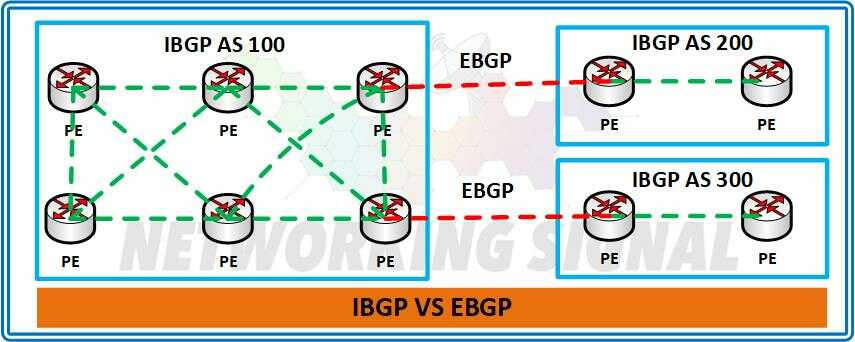When it comes to routing between autonomous systems, the discussion instantly turns to Internet Border Gateway Protocol (IBGP) and External Border Gateway Protocol (EBGP).
Every system in a network has a set of routes that dictate its behavior as such it’s essential for administrators to understand how different protocols are used in order to ensure efficient routing. In this blog post, we will discuss the differences between IBGP and EBGP and provide an overview of their common use cases.
What is IBGP?
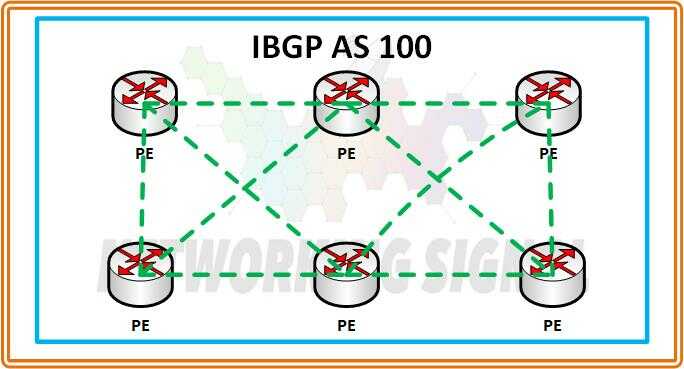
IBGP is a routing protocol used for communication between routers within the same autonomous system. It’s designed to propagate updates and route the most efficient route within an autonomous system. It’s also designed to make sure routes are loop-free, which requires that each router communicates with its neighbor in order to ensure they know of all routes and can make the most efficient routing decision.
What are the Advantages of IBGP?
The advantages of IBGP are:
- It ensures loop-free and accurate routing. By using path vector routing, IBGP prevents loops within an autonomous system while simultaneously ensuring the quickest route is taken.
- It eliminates asymmetric routes. Unlike other protocols, IBGP uses interior and exterior gateways to ensure that packets are routed in the most efficient manner.
- It is fast and reliable. IBGP is able to automatically detect route changes and propagate those updates to other routers without manual intervention, making it a highly reliable protocol for routing within an autonomous system.
What are the Disadvantages of IBGP?
The disadvantages of IBGP are:
- It requires additional administrative effort. Setting up and configuring an IBGP network can be complex and time-consuming, as it involves manually setting up routes between all the routers in the autonomous system.
- It is not efficient for large networks. As IBGP relies on direct links between routers within an autonomous system, it can become slower and less efficient in larger networks.
- It is not able to connect with other autonomous systems. As IBGP can only be used within an autonomous system, it cannot be used as a communication protocol between different autonomous systems.
What are the Use Cases of IBGP?
- IBGP is typically used in large networks with multiple routers and gateways.
- It is useful for ensuring reliable routing within an autonomous system, as it can detect route changes automatically and propagate updates quickly.
- IBGP is also commonly used in MPLS networks, where it can be leveraged to create virtual private networks (VPNs).
What is EBGP?
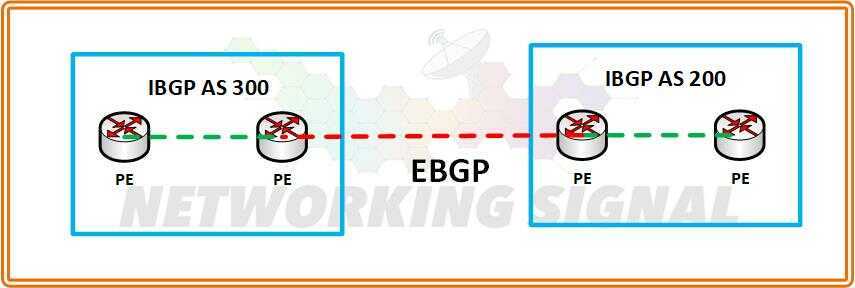
EBGP is a routing protocol used for communication between routers of different autonomous systems. It’s designed to ensure that routes are relayed between autonomous systems, which allows for more efficient routing. Each router must also communicate with its neighbor in order to exchange routes and ensure they are loop-free.
What are the Advantages of EBGP?
The advantages of EBGP are:
- It ensures efficient routing between autonomous systems. By using path vector routing, EBGP is able to quickly detect route changes and propagate them throughout the network.
- It can be used for large networks. Unlike IBGP, EBGP does not require direct links between each router which makes it ideal for larger networks.
- It is able to connect with other autonomous systems. As EBGP can be used between different autonomous systems, it offers more flexibility when routing packets.
What are the Disadvantages of EBGP?
The disadvantages of EBGP are:
- It requires additional administrative effort. Setting up and configuring an EBGP network requires more administrative effort than IBGP, as it involves manually setting up routes between each router in the autonomous system.
- It is not able to detect route changes quickly. As EBGP relies on manual updates, it can take longer to detect and propagate route changes compared to IBGP.
- It is less secure than other protocols. As EBGP relies on manual updates, it can be vulnerable to malicious actors who could potentially disrupt the network by injecting false routes into the system.
What are the Use Cases of EBGP?
- EBGP is typically used in large networks with multiple autonomous systems.
- It can be used for interconnecting different networks, such as in the case of a VPN.
- It is also useful for connecting ISPs, as it can ensure efficient routing between different autonomous systems.
- Additionally, EBGP is often used in content delivery networks to quickly route data and requests between servers located around the world.
Compare the Autonomous Systems of IBGP and EBGP
IBGP is used within an autonomous system and is designed to optimize routing within that system. It relies on direct links between each router in the network and can detect route changes quickly due to its distributed nature.
EBGP, on the other hand, is used for communication between different autonomous systems. It uses path vector routing to connect different systems and requires manual updates in order to detect route changes.
Additionally, it can be used for connecting ISPs as well as content delivery networks.
Example:
- A company has two offices located across the country that need to be connected. The first office is part of an autonomous system and the second is not. In this case, IBGP would be used within the autonomous system while EBGP would be used to connect it to the other office. This would allow for efficient routing between both offices, as well as provide a secure connection.
Compare the Administrative Distance of IBGP and EBGP
The administrative distance is used to determine which route will be taken when more than one route exists for a destination. The lower the administrative distance, the higher the priority of the route.
IBGP has an administrative distance of 200, while EBGP has an administrative distance of 20. This means that when a router receives two routes for the same destination, it will prefer the route received through EBGP as it has a lower administrative distance.
Example:
- A company has two offices, each connected via an IBGP and EBGP connection. Both offices have a route to the same destination. The administrative distance for the routes is 200 for the IBGP connection and 20 for the EBGP connection. In this case, the route learned through EBGP will be preferred over the one learned through IBGP.
Compare the Loop Avoidance of IBGP and EBGP
IBGP and EBGP use different methods for loop avoidance.
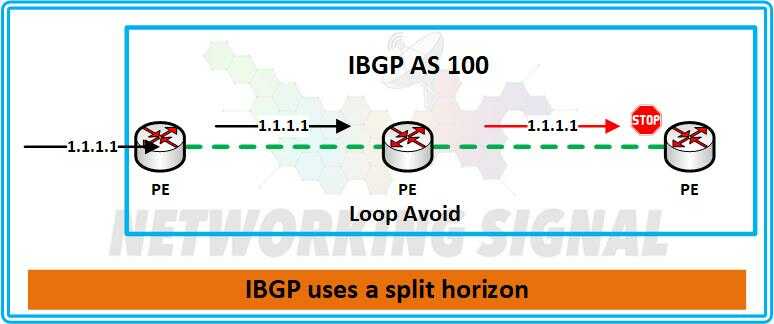
IBGP uses a split horizon, which prevents a router from sending traffic it has already received back in the same direction. It also uses route reflection to avoid loops within an autonomous system.
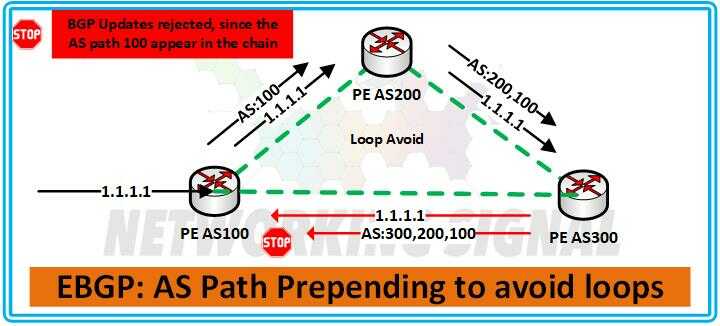
EBGP on the other hand uses an additional mechanism called AS Path Prepending to avoid loops. This mechanism works by adding a sequence of autonomous system numbers in the BGP update. The router then looks at the AS numbers in this list, and if it finds its own number in that list, it will discard the route since it has already been traversed and is therefore a loop.
Example:
A company has two offices, each connected via an IBGP and EBGP connection. Both offices have a route to the same destination. The router in Office A receives both routes from the IBGP and EBGP connections. In this case, the router will first use split horizon to determine if it has already received the route from either of the connections.
If the route has not already been received, then the router will use AS path prepending for EBGP to determine if it’s already been traversed and discard it if necessary. If neither of these mechanisms indicates a loop, then the lower administrative distance route is chosen and sent back to Office A.

